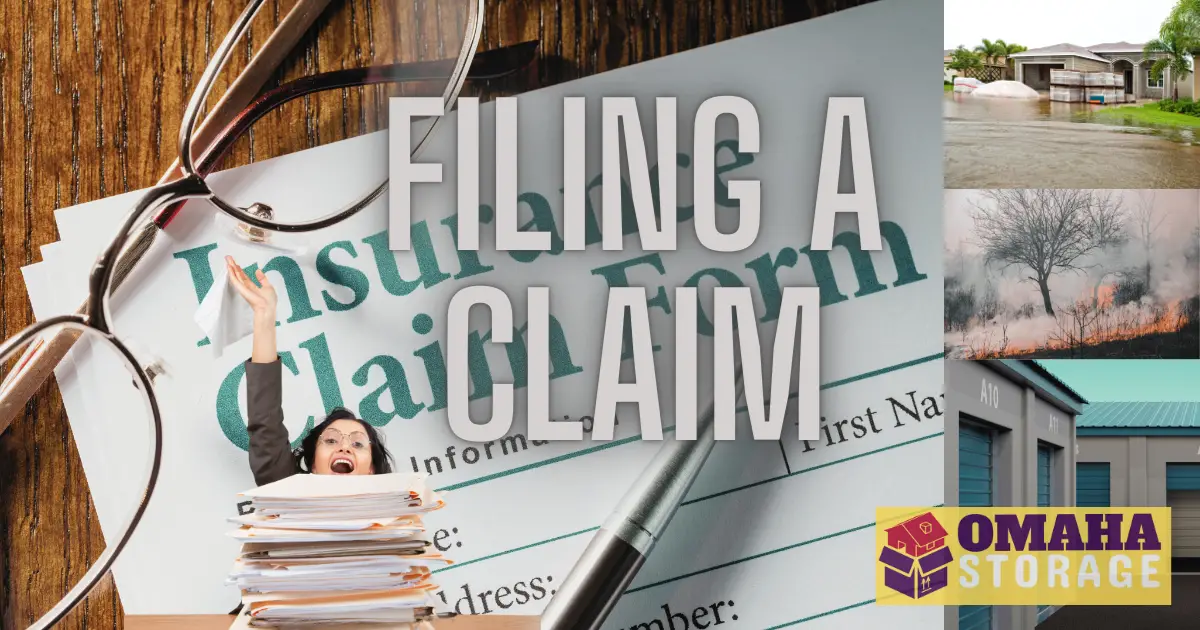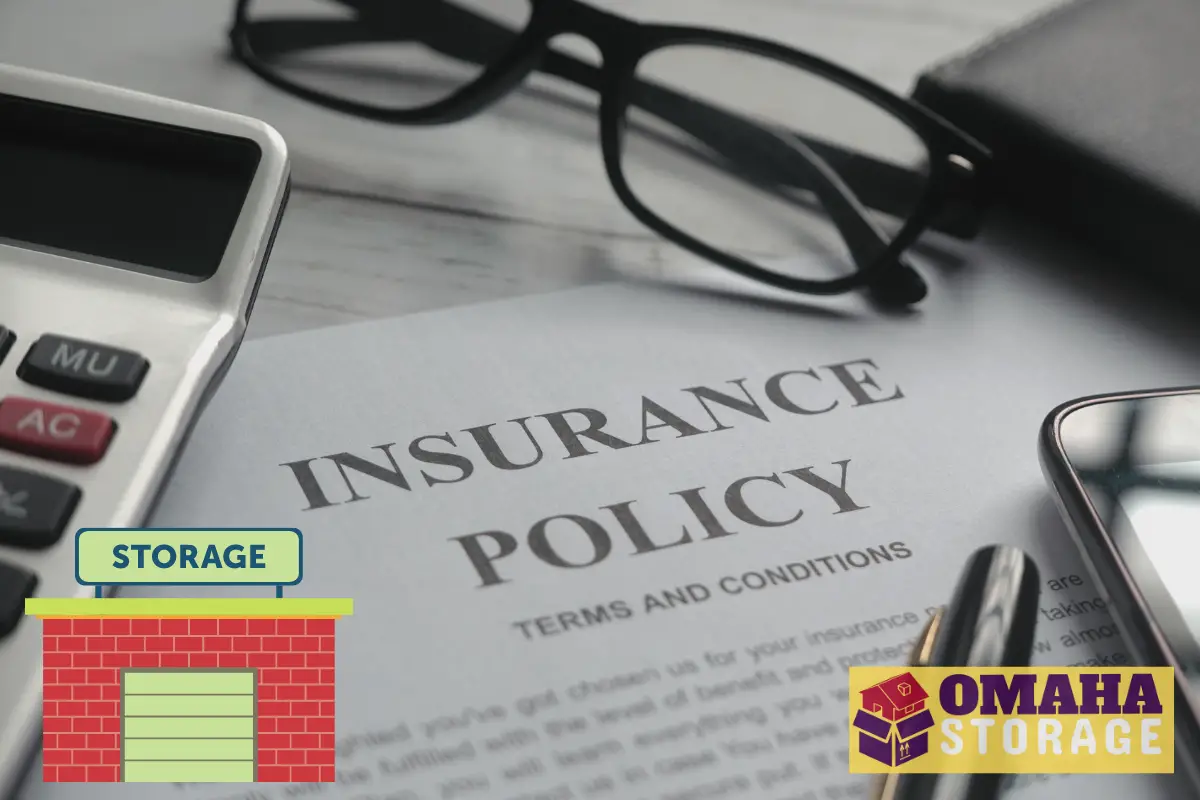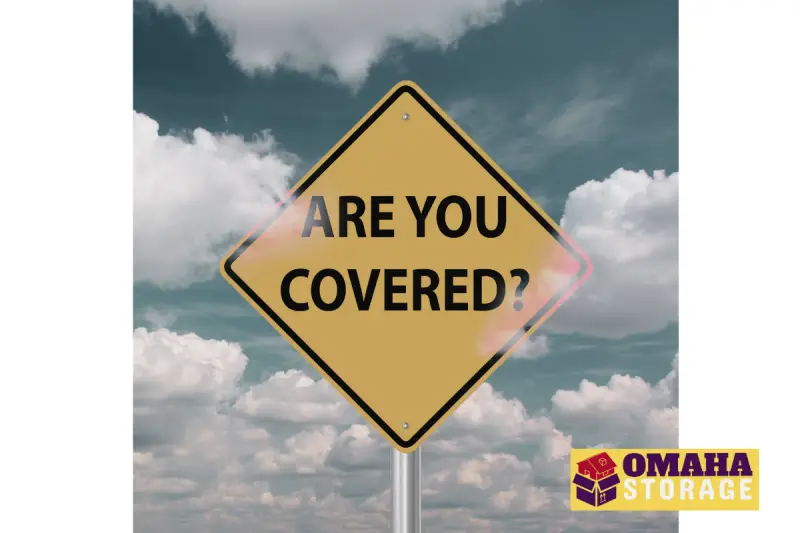You’ve carefully packed away your cherished possessions, those irreplaceable mementos and valuable items into a self-storage unit.
You’ve chosen a storage place with care, confident in its promise of safety and security. You’ve locked the door, walked away and carried on with your life — comforted by the knowledge that your belongings are being protected.
But then out of nowhere a disaster strikes. A raging fire, reducing everything to ashes. Or a sudden flood hits, placing your precious items into water. Or even a break-in, a violation of the one place you thought was impregnable.
The news hits you like a punch in the gut. Your heart sinks, your stomach churns and a sense of despair hits you. Those items weren’t just things; they were memories, personal items, pieces of your past maybe even your future.
Then you remember: You have self-storage insurance. Amid the chaos and the shock, this realization provides some hope. You have a safety net.
So you get a claim ready. It might seem like a daunting task, all the paperwork and technical jargon. You might feel overwhelmed, unsure of where to start or what to do.
Don’t worry. You’re not alone in this journey. We’re here to guide you through this process, step by step.
Join us as we help understand your policy, gather the necessary documents, fill out claim forms, and assertively follow up with your insurance company. You’ll get tips and advice to help you maximize your chances of a successful claim.
Recover what you can so you can move forward.
Understanding Your Self Storage Insurance Policy
Just like any insurance policy, your self-storage insurance is a contract. It’s a promise, a safety net.
To make it work for you, you need to understand:
- What does it cover?
- What are the exclusions?
- The deductibles?
- The limits?
It’s all in the fine print. Grab your policy and put on your reading glasses.
When to File a Claim
The question of when to file a claim with your self-storage insurance company is a crucial one. It’s like knowing when to sound an alarm.
When do you start? As soon as you discover a loss or damage.
Imagine walking into your storage unit and noticing that something’s wrong. Maybe it’s a water stain spreading across the box of your vintage comic book collection, or the shattered remnants of your grandmother’s antique mirror.
Perhaps it’s an empty space where your high-end mountain bike used to be. The moment you notice that something’s wrong, that’s your cue. That’s when you need to spring into action.
Timing is not just important; it’s crucial. Time is not your ally in these situations; it’s a ticking clock, counting down. Most insurance policies have a specific window for filing claims, a deadline. This could range from a few days to a few weeks, depending on your policy. If you miss this window — you might lose your chance to file the claim.
Don’t put it off til later. The moment you discover a loss or any damage, start the claim process. Document the damage, gather your evidence, and contact your insurance company. It might seem like a lot to handle, especially when you’re dealing with the shock of the loss. Remember… every minute counts.
Steps to Filing a Claim
Document the Damage or Loss
The first step is documenting the damage or loss. This is your chance to play detective and gather evidence. Take photographs or videos of the damage, make a list of the items that have been affected — jot down any details that might be relevant.
This documentation will serve as the foundation of your claim, proof that substantiates your loss.
Gather Necessary Documentation
Next gather necessary paperwork. This can include receipts or invoices for the damaged items, a copy of your insurance policy, and any other documentatoin that your insurance company might require. Think of this paperwork as the foundation of your claim — tangible evidence supporting your loss.
Contact Your Insurance Company
Once you have documentation and paperwork ready, it’s time to contact your insurance company. Report the loss or damage to them and initiate the claim process.
During this conversation, you’ll likely need to provide specifics about the incident and the extent of the damage. Honesty and clarity are key during this step.
Complete the Claim Form
The next step is filling out the claim form. It’s actually one of the most important steps in this process. The claim form is your official statement, basically a written account of the incident. It’s crucial to fill out accurately and thoroughly — providing as much detail as you can.
Follow Up on Your Claim
Once you’ve submitted your claim, it’s time to follow up. Sadly, you’ll probably have to follow up several times until the loss is compensated to you.
Follow up involves staying in touch with your insurance company, keeping track of the progress of your claim and providing any additional information required. Following up ensures that your claim stays on track and moves towards a resolution… even if it feels like it is crawling forward.
Each of these steps mentioned above is crucial. Each step you take gets you closer to your goal. Be motivated, persistent and know that “you’ve got this.”
Tips for a Successful Claim Process
Want to increase your chances of a successful claim?
Here are some tips…
Be proactive
Contact the insurance company first (and often) if you don’t hear anything for a few days.
Be organized
Have all your paperwork together and keep copies of everything you send for your claim. Also make journal notes of each phone call you have.
Be persistent
This goes along with being proactive. Keep at it and keep checking on your claim.
Be patient
Insurance claims are a marathon, not a sprint. Unfortunately it’s going to take time. Try not to get frustrated, try not to yell at anyone on the phone, try not to threaten any action. Any of these things could cause delays — or even cancellation — for your claim.
What to Do If Your Claim Is Denied
By this point, hopefully your claim has been approved and you have a check in hand.
If not, then let’s see what can be done.
Receiving a denial for your self-storage insurance claim can feel like a punch to the gut. You’ve gone through the process, followed the steps and now you’re left standing at a dead end.
But here’s the thing: a denial is not the end of the road. In fact, it’s very common and a normal part of the process. Think of it as a test of your resolve.
Granted it’s a setback, but it’s not a full stop. You have options. Main thing is to see what needs to be changed, and make fast adjustments and resubmit.
The first thing to do if your claim is denied is to understand why. Insurance companies are required to provide a reason for denying a claim. It could be due to a lack of coverage, insufficient documentation or even a simple clerical error.
One of your options is to appeal the denial. This involves writing a letter to your insurance company, stating your case and providing any additional information or documentation that could support your claim. It’s your chance to argue your case, to present new evidence and plead for a reconsideration.
Another option is to negotiate with your insurance company. Sometimes a claim can be denied because the cost of damage is less than your deductible — or because the insurance company disputes the value of those damaged items.
This is a chance where you might be able to negotiate a settlement that’s acceptable to both parties.
You also have the option of seeking help from a third party. This could be a lawyer, a public adjuster or your state’s insurance department. These professionals can provide advice, assist with the appeal process, and in sometimes mediate between you and the insurance company.
The main thing is a claim denial is not a brick wall. It’s a detour, a redirection. Take a deep breath, regroup and come up with your new plan of action.
With the right approach you can turn that denial into an approval.





